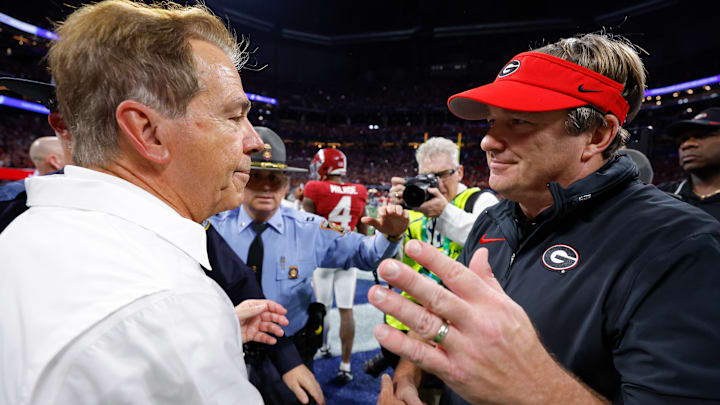Early signing day in December, national signing day in February and the Under Armour All-American Game are days that have been highly anticipated amongst college football fans for a long time.
Historically, wherever a player signs is talked about for years amongst fans under a microscope as they talk and analyze whether it was the right decision or wrong decision for a player at that time. One of the more famous moments was when at that time high school recruit, Landon Collins made his announcement to his mom’s dismay during the 2013 Under Armour All-American game.
Collins chose Alabama with coach Nick Saban, while his mom on ESPN shook her head shamefully in the background saying, “Go Tigers,” eluding to the fact that she wanted Collins to stay back home in Louisiana and attend LSU under head coach Les Miles.
Collins went on to have a stellar NFL career, which stemmed from three seasons under Saban at Alabama.
Another moment was when high school running back Alex Collins from Florida committed to the Arkansas Razorbacks in 2013. Collins’ mom reportedly refused to sign the letter of intent, wanting Collins to stay home in Florida and attend the University of Miami.
Collins attended Arkansas for three years after all, and went on to have a five year NFL career.
The transfer portal though has changed the game so moments like these, and commitments by players are more-so null-in-void.
Why signing day no longer matters in college football
The number of transfers each year was substantially less than what it is now-a-days, which brought tremendous value and intrigue to the freshman signing class for each school. The reason transfers were less frequent was that players had to sit out one full year if they transferred. Now-a-days, players get a one-time “free pass” before having to sit out a year becomes a potential issue if they were to transfer a second time.
Knowing they have a free pass, we’ve seen an exorbitant number of players enter the portal each year the past few seasons. Knowing they have this on the table and are taking advantage of it, this devalues freshman signing classes significantly.
I go into the transfer portal rules more in depth here.
Also, Name image likeness, also know as “NIL” has a part to play. With players combining their free pass to transfer, along with the capability to potentially make more money at another school, it’s essentially turned college football into what many compare to NFL free agency. And it’s not far off.
Furthermore, with several lawsuits looming against the NCAA for rescinding players’ ability to transfer more than one time, there’s a strong possibility that player having the ability to transfer multiple times may return permanently if the supreme court rules against the NCAA, making it- yes, NFL free agency level.
For the time being, according to an article by www.themessenger.com‘s Javon Edmonds , “On Dec. 13th, U.S. District Judge John Preston Bailed issues a temporary restraining order that granted immediate eligibility to all college athletes seeking a multi-transfer waiver.”
The only silver lining here is that at this point, the restraining order is temporary and only for the 2024-2025 season. There’s a strong likelihood as mentioned however that it could go beyond it. LockedOn Ole Miss’s Steve Willis goes into this in detail on a recent podcast on LockedOn’s www.YouTube.com channel. Willis explains gives his thoughts on the order of importance involving the transfer portal, early signing day, national signing day and even JUCO transfers.
The bottom line is that it’s not good news for college football traditionalists. College football as we know it is changing right before everyone’s eyes.
